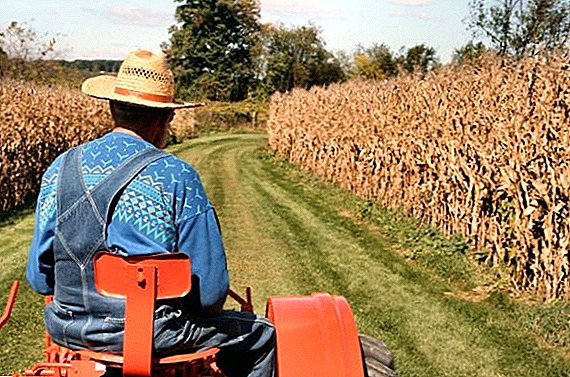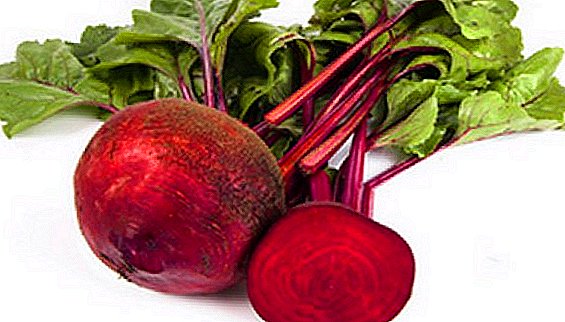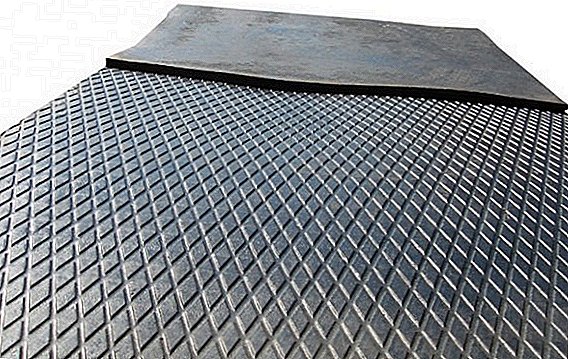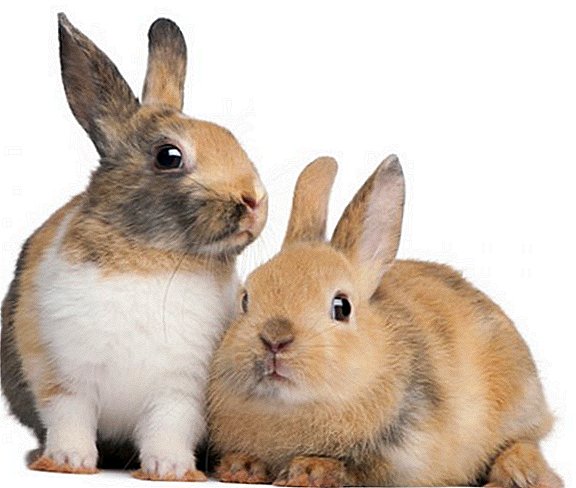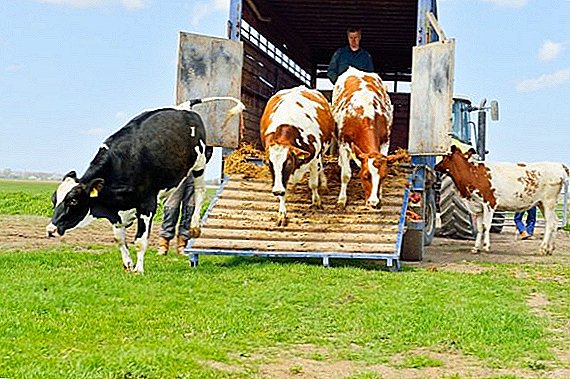 In the modern agricultural market, the subject of trade is not only the dairy and meat products of cattle, but also the animals themselves. Thus, the livestock is updated and its selection. For the transportation of live weight all types of transport are used, however, in order for the transportation to be successful and legal, it is necessary to take into account a number of rules.
In the modern agricultural market, the subject of trade is not only the dairy and meat products of cattle, but also the animals themselves. Thus, the livestock is updated and its selection. For the transportation of live weight all types of transport are used, however, in order for the transportation to be successful and legal, it is necessary to take into account a number of rules.
Rules for the transport of cattle
The processes of transportation of live weight are regulated by special legislative acts, the norms of which are mandatory for execution regardless of the distance of the animal transportation.
Important! For transportation of cattle it is necessary to provide inside the vehicle a non-slippery and dense floor covering.
Loading
The beginning of this procedure is the examination of animals by a veterinarian, at the end of which a permit for transportation is issued. Having received the advising document, you can proceed directly to loading the livestock itself:
- For this purpose, special loading and unloading devices (ladder, platform, bridges, steps, scaffolds) are used, along which cows and bulls are driven into transport. It is important that additional equipment minimizes injuries and the possibility of escaping livestock. Also in terms of disinfection matters the material from which it is made.
- Before loading, everything necessary for the comfort of animals is prepared: they spread litter and high-quality hay on the floor, make water if necessary, and cover the body with an awning or tarpaulin to protect it from the sun from above. In winter, they install additional heating and lighting.
- Inside necessarily equip separate stalls and leash sites.
- In order to avoid overweight it is recommended to place the cattle evenly. Ignoring this rule often leads to emergency situations on the road.
- Adult individuals must be tied head forward. And the young stock are allowed to be transported without a leash, however, in a vehicle, there should be enough space for everyone, taking into account the possibility to lie down.
- In cases where the loading or unloading of livestock lasts more than 4 hours, the sending or receiving side must provide watering, feeding, and also a vet examination.

Important! In cases of joint transportation with animals of other goods, their placement is planned in such a way as to exclude injuries and stresses of cattle. In the compartments with livestock it is strictly forbidden to place objects that can adversely affect animals.
Shipping
Any travel for cattle is accompanied by stress, especially for pregnant cows. Abrupt movements and jolts in vehicles with non-observance of the rules of cargo transportation can provoke faces, injuries and premature calving.
To avoid these unpleasant consequences, the current legislation regulates the following procedure for transporting cattle:
- If the trip lasts less than 6 hours, the livestock can not feed. In all other cases, after a specified period of time, it is imperative to take a break to water and feed the livestock, as well as to clean the internal space of cow excrement.
- During the drive you can not make sudden jerks, turns or exceed the speed.
- Transportation must be carried out with the assistance of accompanying personnel. The exception is when the carrier simultaneously performs the functions of an accompanying person, as well as when the sender has provided for the care of the transported livestock at the stopping points. According to the regulations, animals that are transported in closed well-ventilated containers, where food and drink are provided in volumes that are 2 times higher than the planned needs, also do not need to be accompanied.
- Before the start of the journey, it is necessary to allow the living creatures to get used to the new conditions.
- Inside the transportation room, it is imperative to provide for ventilation, taking into account weather conditions, season features, number of livestock and its type.
- Feed in vehicles should be kept separate from animals. If you have to travel to small distances in the open body, cow's provisions still need to be covered with a tarpaulin.
- It is forbidden to use painkillers to animals that are susceptible to transportation. The only exceptions are when such injections are vital for the normalization of the condition of livestock. However, to apply this type of drugs can only specialist from the field of veterinary medicine.
- If cattle is very different among themselves in age categories and species, and there are adult bulls and sexually mature females in the herd, transportation is carried out with their separation. It is also unacceptable that in a single container at the same time there were loose people and on a leash.
- In the event of the discovery of a disease or death of animals during transportation, the accompanying person must immediately notify the carrier of the incident to ensure the isolation of the sick. Such individuals are necessarily provided the first veterinary care. If necessary, death can be possible, taking into account the provisions of Article 17 of the Law of Ukraine "On the protection of animals from cruel behavior".
- If one of the cows died during the trip, the veterinarian should find out the reasons and recommend quarantine for the remaining animals.
- According to the recommendations of veterinary specialists, the isolation of livestock, which for some reason is no longer suitable for further transportation, is carried out at the place of the nearest stop.
- Inside a transport vehicle, livestock must be placed in such a way that accompanying personnel can pass between them, monitoring their state of health.

Did you know? Slavs from ancient times worshiped cows as a symbol of fertility, and the bulls for them were the personification of abundance and strength.
Unloading
Having traveled the required distance, the cattle carrier, when unloading it, should take into account the following recommendations:
- The unloading process should be carried out in good lighting conditions using a special platform.
- During the withdrawal of livestock transport containers should be placed in a vertical position, eliminating the possibility of sharp shocks, swaying or continuing movement. Containers weighing more than 50 kg, equip the necessary number of fasteners.
- It is strictly forbidden to hurt them, beat them, press on places with increased sensitivity, and also hang cattle by mechanical means during the withdrawal of animals from transport.
- You can not pull cows and bulls by the horns, head, ears, limbs, tail or skin.
- It is absolutely unacceptable to use needles, spikes and any other prickly devices when unloading livestock.
- Means with an electric shock function are used exclusively in cases involving adult cattle who refuse to walk. It is important that there be free space ahead of the cows. Veterinarians advise the impact of such objects to direct to the muscles of the back of the body, limiting their effect to 1 second. In the case when the animal does not react stubbornly to the stimulus, its use is stopped.

Important! Unsuitable for transportation are: calves up to 10 days old, newborns with a non-healed umbilical cord, body cows during the last period of pregnancy, individuals with open severe wounds, as well as individuals with soft horn embryos.
Transportation for transportation
For transportation of cattle over long distances, as well as in cases where the relief features of the terrain impede the race, specially equipped transport is used, and such a delivery of live weight can be carried out by air, sea, rail and highways. Let us consider in more detail the subtleties of each type of cattle transportation. 
Motor transport (cattle truck)
We are talking about modern overall vehicles with a height of at least 100-110 cm, which are equipped with:
- covering awning to protect livestock from rain, scorching sun or cold;
- solid non-slip body floor (regardless of the season and weather conditions on top of it is covered with a layer of sawdust or fresh straw);
- ventilation system;
- heating (relevant only in the autumn-winter period);
- interior lighting;
- watering (usually this issue is solved with the help of internal tanks and an electric pump for water supply);
- safe system of fencing, partitions, locks and latches;
- robust compacted construction (especially when it comes to stacked cattle);
- special marking for livestock, as well as its vertical placement;
- manure collection;
- high door with a ladder;
- 2 meter-high partitions and tether rings (protruding nails and any projections are excluded);
- several compartments (in case of isolation of diseased animals).
Breeds of dairy cows are considered to be Yaroslavl, Kholmogory, Jersey, Holstein, brown Latvian, red steppe, Dutch, Ayrshire.
 It is important that vehicles for cattle transportation should be clean and dry, with no third-party odors. In some cases, veterinarians require prior body disinfection.
It is important that vehicles for cattle transportation should be clean and dry, with no third-party odors. In some cases, veterinarians require prior body disinfection.According to experts, cattle trucks, like any other type of transport, must provide animals with safety, be comfortable to service animals, and exclude the possibility of their escape.
Did you know? On the nose, each cow has a unique pattern, like a human fingerprint. In the United States of America, this feature of cattle is used to search for it in case of loss.
In one van can be placed no more than 15 adult cows. They are tied with their heads forward, providing space for lying. For road transport, distances of up to 250 km are preferred. If the upcoming journey is shorter, cars with on-board platforms can serve as an alternative to cattle trucks. However, in this case, it is important to equip the internal filling of the body in accordance with the aforementioned norms. At the same time, transport, which was previously involved in the transportation of toxic chemicals and toxic substances, is categorically inappropriate as a means of transportation for cattle.
Did you know? During the bullfight, the red canvas is used exclusively to attract the viewer's eye, because the bulls, like the cows, do not distinguish colors. They are enraged by the fact of the flickering of an incomprehensible object in front of their nose..
Railway
When transporting cows, special trains are used, the wagons of which are equipped in accordance with the Order of the Ministry of Agrarian Policy of Ukraine No. 35 of June 18, 2003 "On Approval of the Rules for Transportation of Animals by Rail".  The regulatory document provides for:
The regulatory document provides for:
- the internal location of cattle in 2 rows parallel to the direction of movement (heads to the center) or in 1 row perpendicular to the movement of the car;
- availability of feeders and drinkers, bindings, water tanks and cleaning equipment;
- rail transportation distance not exceeding 800 km;
- early checking of livestock for adaptability to the transport mode of feed (usually start one week before transportation by transferring the animals to two meals);
- loading and unloading of live weight exclusively by the transverse method (carried out only during the light time of the day);
- the presence of the roof on the cars;
- availability of feed, water and fresh bedding, including stock;
- appropriate labeling indicating live weight transport;
- large air vents.
Did you know? Cows in terms of their numbers are second in mammals after humans. In the world there are about 1.5 billion. In some countries of Latin America there is one cow per inhabitant, and in Australia this living creature is 40% more than people.The design of the cars should exclude the possibility of cows escaping and provide them with the necessary comfort. The suitability of cars for transportation is determined by specialists of the veterinary service. If it is necessary to form trains or move wagons, the carrier should take the necessary measures to protect livestock from sudden jolts of the vehicle.
According to experts, from 1 to 14 heads of adult cattle, up to 28 heads of young stock and up to 50 heads of small calves can fit in 1 wagon. However, in the process of placing the flock transported it is necessary to leave a reserve of free space. 
Air
Such transportation of cows and bulls are used in cases of international exchange of livestock. According to the current legislation, it is at the same time allowed to transport no more than 200 head of livestock by air. Special requirements are placed on the vehicle interior:
- Animals should be accompanied by guides with a calculation of 1 guide for 20 units of livestock. The conductors should monitor the reaction of the cows to pressure drops, their behavior, as well as feed, water, clean the stalls and replace the litter.
- Among the accompanying personnel must be a veterinarian with medicines to provide emergency care to animals.
- Conductors are required to report to the crew command of all incidents that question the safety of transportation, and to act further in accordance with its orders.
- The aircraft should be equipped with stalls 220 cm long, 150 cm wide and height with walls lined with softening material, without sharp parts and protrusions. The floor and side walls are equipped with fixings for mooring to the walls of the cabin. On the floor are boards and porous rubber, on which the litter is laid.
- The amount of water and nutrient provisions, as well as litter, should be calculated based on the possible flight delays. In the case of delays and landings at intermediate airports, animals are not taken out of the aircraft.
- Before each new flight, the shipping bay must be thoroughly cleaned and disinfected.
Did you know? The UN believes that cows do more damage to Earth’s ecology than cars and airplanes are taken together. Such a position is explained by the release of artiodal gases, which together with cow manure are responsible for a third of greenhouse methane. It heats the Earth 20 times faster than carbon dioxide..

Water
By water, bulls and cows are transported using capacious one- or two-story barges. For once in 1 vessel you can move up to half a thousand heads of mature cattle.
Learn more about the features of breeding Simmental, Shorthorn, Kazakh Whitehead, Hereford, Aberdeen-Angus cows.
Waterborne vehicles intended for transporting animals must comply with the following requirements:
- Before loading each new livestock to undergo a thorough disinfection.
- Have specially equipped decks or holds where cows and bulls will move. There should be provided pens size 2-2.5 square meters. m in width and not less than 1.9 m in height, as well as drinkers, feeders, water, feed, bedding, cleaning equipment.
- Every 20 cows must be accompanied by 1 guide. In the event of a disease or loss of livestock on the way, service personnel should immediately report the incident to the captain of the vessel. In such situations, the ship changes course to the nearest port, where there is a veterinary surveillance.

The list of documents for the transport of cattle
Regardless of the type of vehicle and the forthcoming distance, the legal transportation of cattle should be based on a package of accompanying documents, which indicate the type, number of animals transported, their health status, purpose, route and much more. 
Before departure, the carrier should take care of the availability of:
- all copies of invoices issued by the sender;
- veterinary certificates (it is important that all necessary forms are available) and certificates;
- veterinary and sanitary passports for cattle;
- permission of the veterinarian (issued after inspection of the cattle);
- written permission of the Ministry of Agriculture, as well as transit documents (relevant only in cases of export of cattle abroad);
- State veterinary inspection marks in the certificate of transport authorization.
Important! Live weight is not accepted for transportation if the accompanying documents were filled with different inks with corrections, unclear and illegible handwriting, without printing, without indicating or incompletely indicating the positions of responsible persons, as well as their signatures.Ignorance of the rules is no excuse, so it is better to prepare in advance for the upcoming path. We hope our article will help you on the road to create the necessary comfort for the traveling cows, to collect the necessary accompanying documentation, avoiding trouble.




